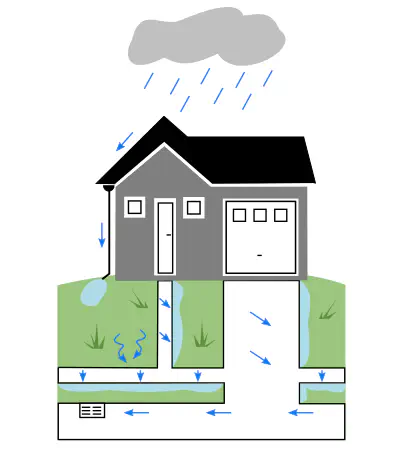Managing Residential Hydrology Across Climates

Key Questions
- How do low-impact stormwater management practices (e.g., “disconnection” of impervious surfaces, soil amendment) interact with one another at the scale of a residential parcel?
- How do low-impact stormwater management practices interact with weather to yield different outcomes under different climatic situations?
- Can we use readily-available lot attributes to prioritize areas for these low-impact practices at the scale of a city?
Key Findings
- Practices targeting impervious-pervious interfaces experience higher runoff but can increase drainage relative to lots with no imperviousness
- Pairing impervious disconnection with soil decompaction synergistically reduces runoff and increases deep drainage and evapotranspiration
- The effectiveness of low-impact stormwater management practices are driven by a) the aridity index and b) between-storm characteristics.
- Statistical models such as PLSR can be harnessed to expand fine-scale insights of complex physical models of urban hydrology.
Status
Parcel-scale exploration and climate analysis are published. City-scale exploration incorporated in Carolyn’s dissertation.
Funding
- Wisconsin Sea Grant Institute. The Hydrologic and Ecologic Effects of Green Infrastructure Within Urban Coastal Catchments. Project number: R/RCE-05. Lead PI: Steve Loheide. Voter role: co-author and graduate student researcher.
- Wisconsin Water Resources Institute. Effects of Nuanced Changes in Lot Layout and Impervious Area Connectivity on Urban Recharge. Project number: WR12R002. Lead PI: Steve Loheide. Voter role: graduate student researcher.
- North Temperate Lakes Long Term Ecological Research. Lead PI: Emily Stanley. Voter role: graduate student researcher.
- UW-Madison Department of Civil & Environmental Engineering. Weston Fellowship. Voter role: graduate fellow.


